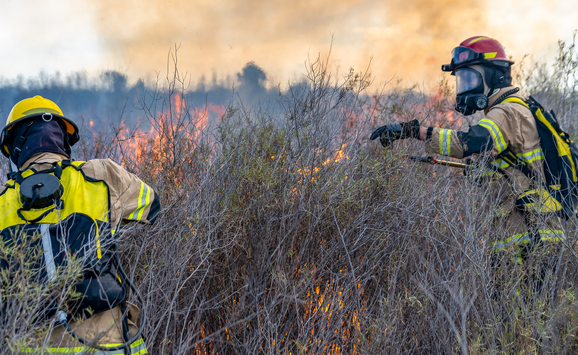The string of devastating hurricanes faced by the United States this season highlights the vulnerability of many US communities to flooding. Despite the fact that the majority of victims were uninsured against floods, these disasters will still prove extremely costly for the National Flood Insurance Program (NFIP). The program’s massive debt ballooned in 2005 after Hurricane Katrina and currently sits at $24.7 billion. Flooding this year will further exacerbate the program’s precarious financial position.
Roy Wright, the Federal Emergency Management Agency’s deputy associate administrator for insurance and mitigation, offered some early estimates of how much the flooding from Hurricanes Harvey and Irma would cost the NFIP. The catastrophe modeling firm Risk Management Solutions, Inc. also produced estimates of claims from Harvey. (No estimates of NFIP claims for Hurricane Maria have yet been released.) These estimates and others are still highly uncertain. For the NFIP, combined flooding events this year will likely make 2017 the second costliest since the program began (Figure 1). Costly flood events have become more common for the NFIP in recent years. Measured by NFIP claims paid, the five most expensive US flood events have all occurred in the last 12 years (Figure 2).
Figure 1. Total NFIP Claims Paid by Year (billions of 2016$)

Figure 2. Top Five Costliest NFIP Events, 1978–2017

Is this the random nature of flooding? Or are floods in fact becoming more expensive for the NFIP over time? We must also consider that the number of policies in the program increased dramatically between 1978 and 2011. To rule out program growth as an explanation for the NFIP’s increasing costs, we plotted claims over the amount of coverage in force by year (Figure 3). Compared to 2012, when Superstorm Sandy hit, 1979 jumps out as a high year—but the highest peaks remain in 2005 and, now, likely 2017.
Figure 3. Total NFIP Claims Paid by Year (% of coverage in force)

We calculated a rough loss ratio for the NFIP by year: claims paid divided by premiums received (note that this ratio does not include any adjustment costs or other transaction costs). For about two-thirds of the years, the ratio exceeds 100 percent. But high spikes are evident for years with severe hurricanes (Figure 4).
Figure 4. Estimated NFIP Loss Ratios by Year

Floods, by their nature, produce “spiky” loss profiles. There will be quiet years when damages are low, as well as years with catastrophic losses. The ability to access capital to pay claims in these severe-loss years is a critical challenge for disaster insurance. The NFIP’s current financial predicament illustrates this: claims from the 2005 hurricane season plunged the program into debt from which it has been unable to recover. In 2005 alone, the NFIP paid out more in losses than it had over the life of the program to that point. Hurricane Sandy created another severe loss year in 2012 and, as noted, 2017 now looks like it will come close to rivaling 2005 in terms of NFIP claims.
Scientists project increasing flood risk in the years to come—due to where and how society builds as well as climatic changes (see here, here, here, here, and here for just a few examples). Going forward, the NFIP needs to develop a robust financing strategy for high-loss years. Communities and households also need to invest more heavily in measures to reduce flood risk that can both help keep costs down and protect communities.





